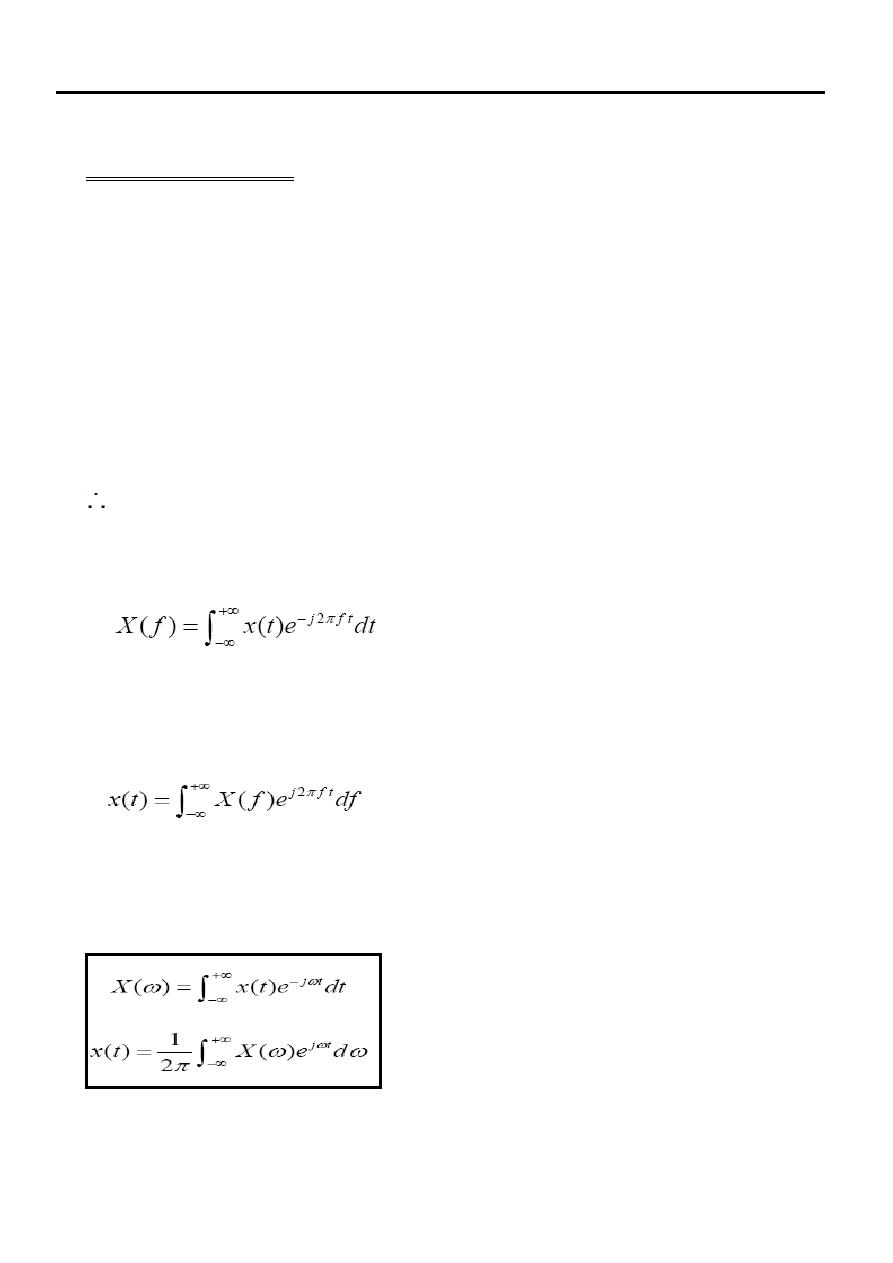
Signals & Systems Lecture Three
Lecturer: Dr.Manal Khadhim.
2
F
F
r
r
e
e
q
q
u
u
e
e
n
n
c
c
y
y
A
A
n
n
a
a
l
l
y
y
s
s
i
i
s
s
o
o
f
f
C
C
o
o
n
n
t
t
i
i
n
n
u
u
o
o
u
u
s
s
S
S
i
i
g
g
n
n
a
a
l
l
s
s
Fourier Transform
The Fourier transform is a linear operator that maps a functional space to another
functions space and decomposes a function into another function of its frequency
components.
Like periodic signals, aperiodic signals also can be represented in the frequency
domain. However, unlike the discrete spectrum of the periodic case, we have a
continuous spectrum for the aperiodic case; that is, the frequency components
constituting a given signal x (t ) lie in a continuous range (or ranges), and quite often
this range could be (−∞, ∞) .
The Fourier transform (FT) is a mathematical function that transforms a signal
from the time domain x(t), to the frequency domain, X(f). The time to frequency
domain transformation is given by:
Equivalently, the Inverse Fourier Transform may be used to convert a signal from
the frequency domain to the time domain as follows:
When the Fourier transform is to be expressed in terms of the angular frequency
(rad/sec) rather than the frequency (Hz) the conversion is achieved by letting
dw=2
π
df ,Therefore Eqs. (1) and (2) when written in terms of ω take the form
…
…
…
…
…
…
…
…
…
…
…
…
…
…
…
…
…
…
…
…
…
…
…
…
…
…
…
…
…
…
…
…
(
(
1
1
)
)
.
.
…
…
…
…
…
…
…
…
…
…
…
…
…
…
…
…
…
…
…
…
…
…
…
…
…
…
…
…
…
…
…
…
(
(
2
2
)
)
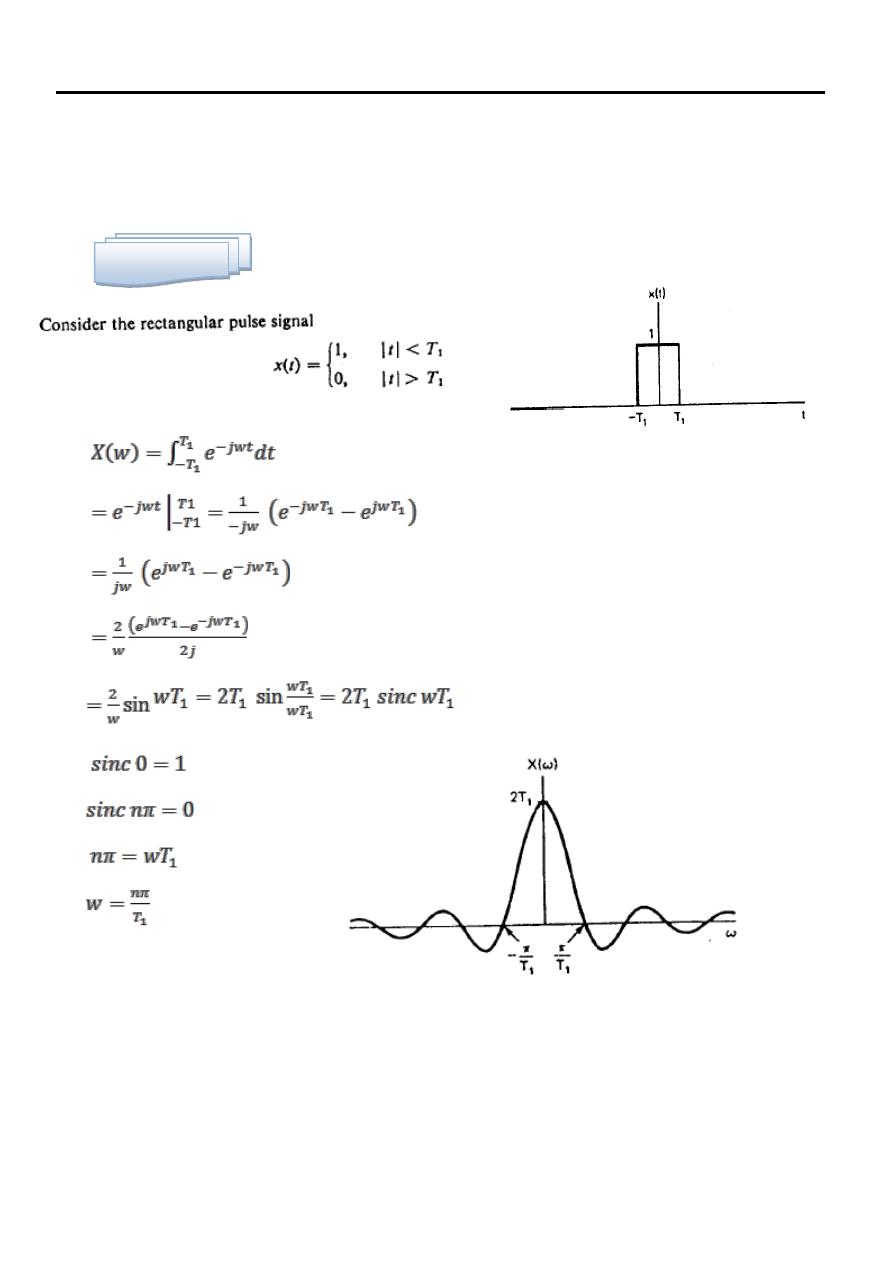
Signals & Systems Lecture Three
Lecturer: Dr.Manal Khadhim.
3
The functions x(t) and X(f) are said to Fourier transform pair, where X(f) is the
Fourier transform of a time function x(t), and x(t) is the Inverse Fourier transform
(IFT) of a frequency-domain function X(f).
Fourier transform for the signal
Example One
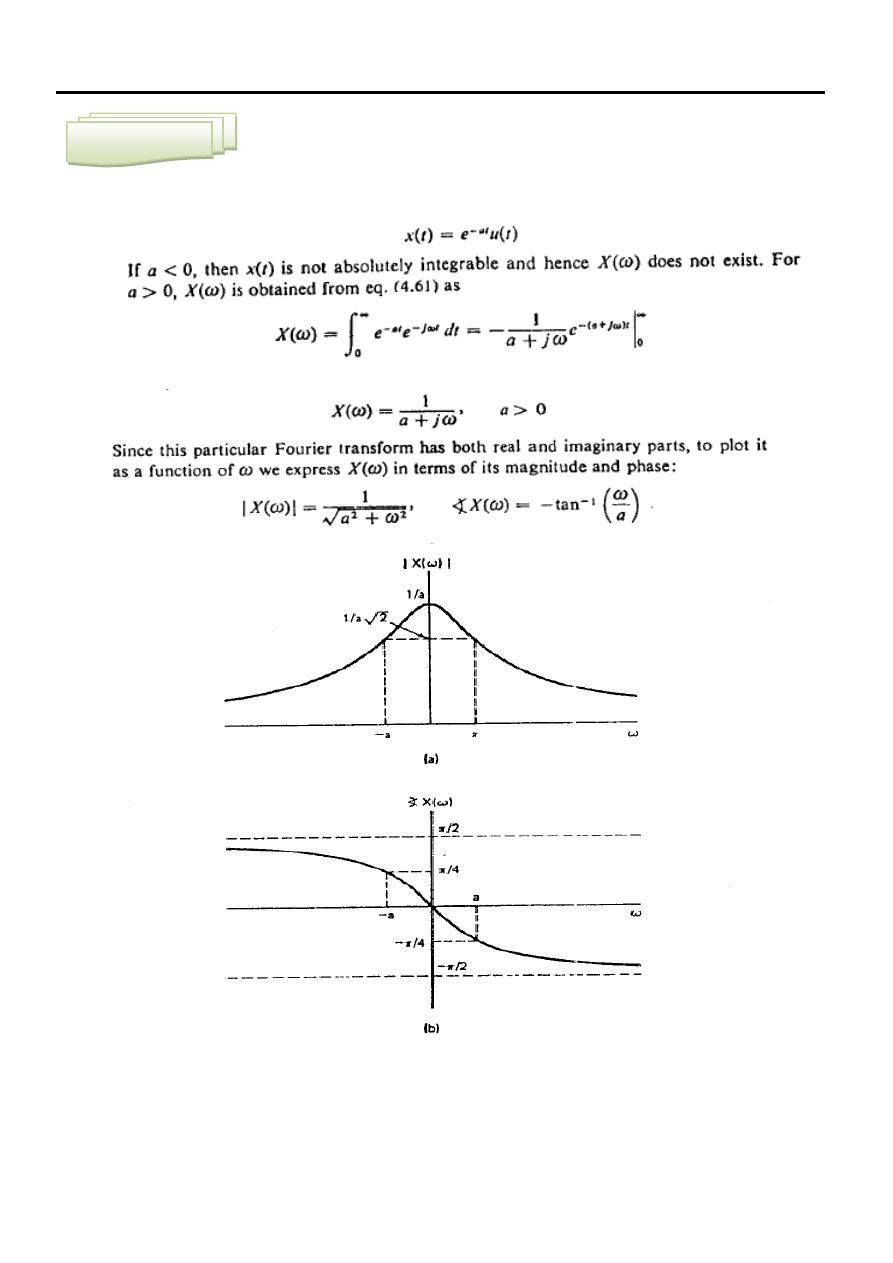
Signals & Systems Lecture Three
Lecturer: Dr.Manal Khadhim.
4
Consider the signal:
Example Two
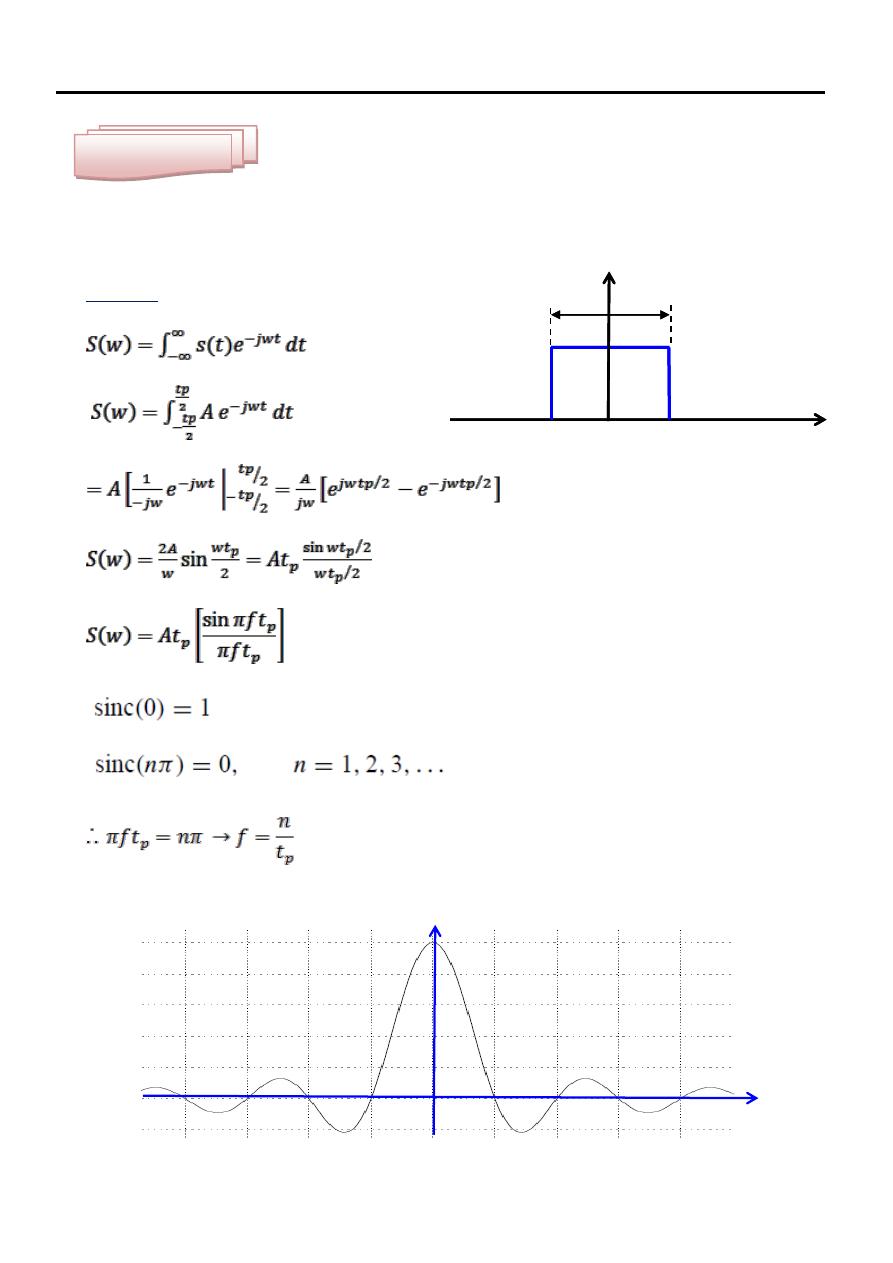
Signals & Systems Lecture Three
Lecturer: Dr.Manal Khadhim.
5
Find the Fourier Transform of S(f) for the signal shown in Figure.
Solution
( this means that Fourier Transform S(f) equal zero at frequencies f= n/tp)
Example Three
A
f
tp
s
(
t
)
t
p
t
0
S(t)
t
0
A
s
(
t
)
t
p
t
0
S(t)
t
0
A
S
(
f
)
1
/
t
p
-
1
/
t
p
2
/
t
p
f
S (f)
1/tp
2/tp
-1/tp
A tp
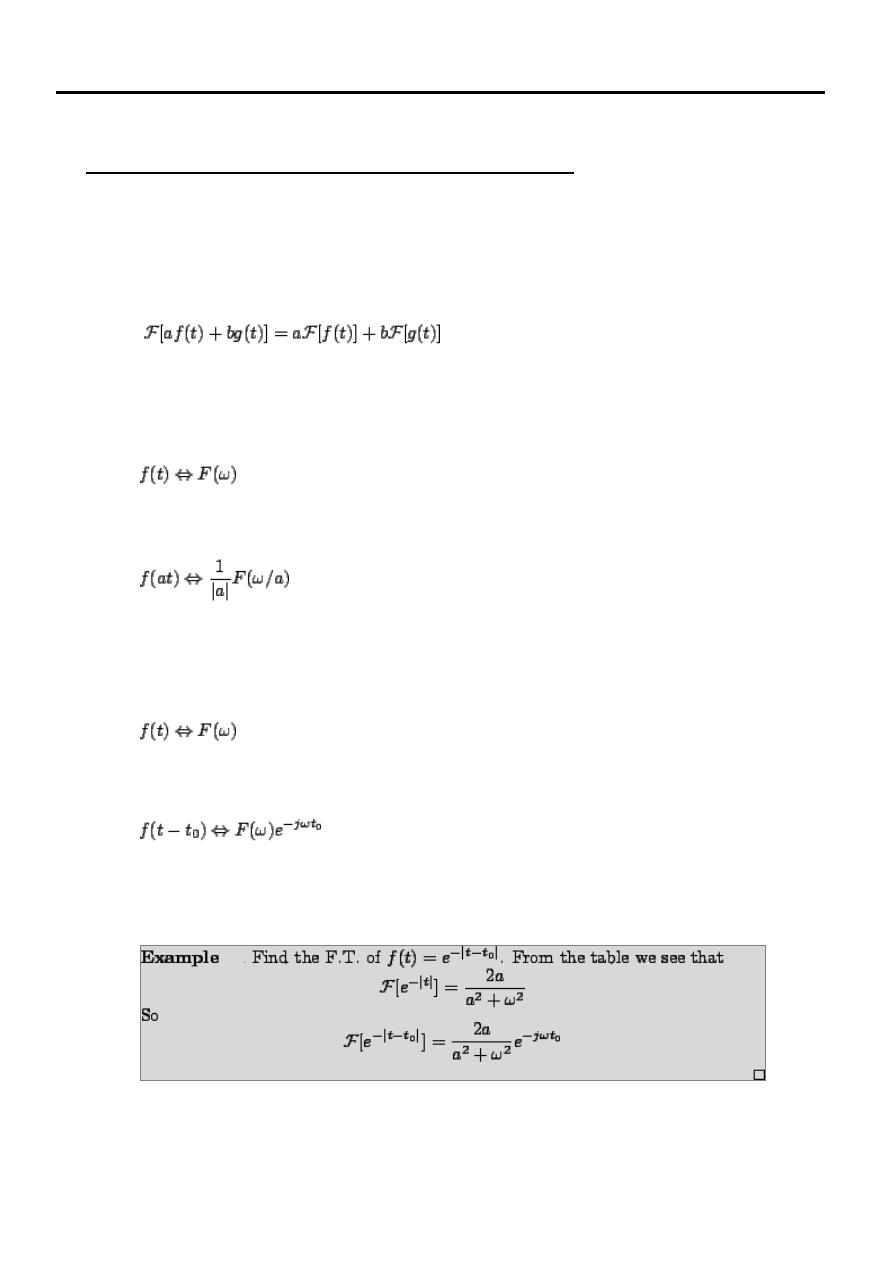
Signals & Systems Lecture Three
Lecturer: Dr.Manal Khadhim.
6
Properties of the Continuous Time Fourier Transform
1. Linearity
The F.T. is linear:
2. Scaling Property
If
Then
3. Time-Shift Property
If
Then
In other words, a shift in time corresponds to a change in phase in the F.T.
`
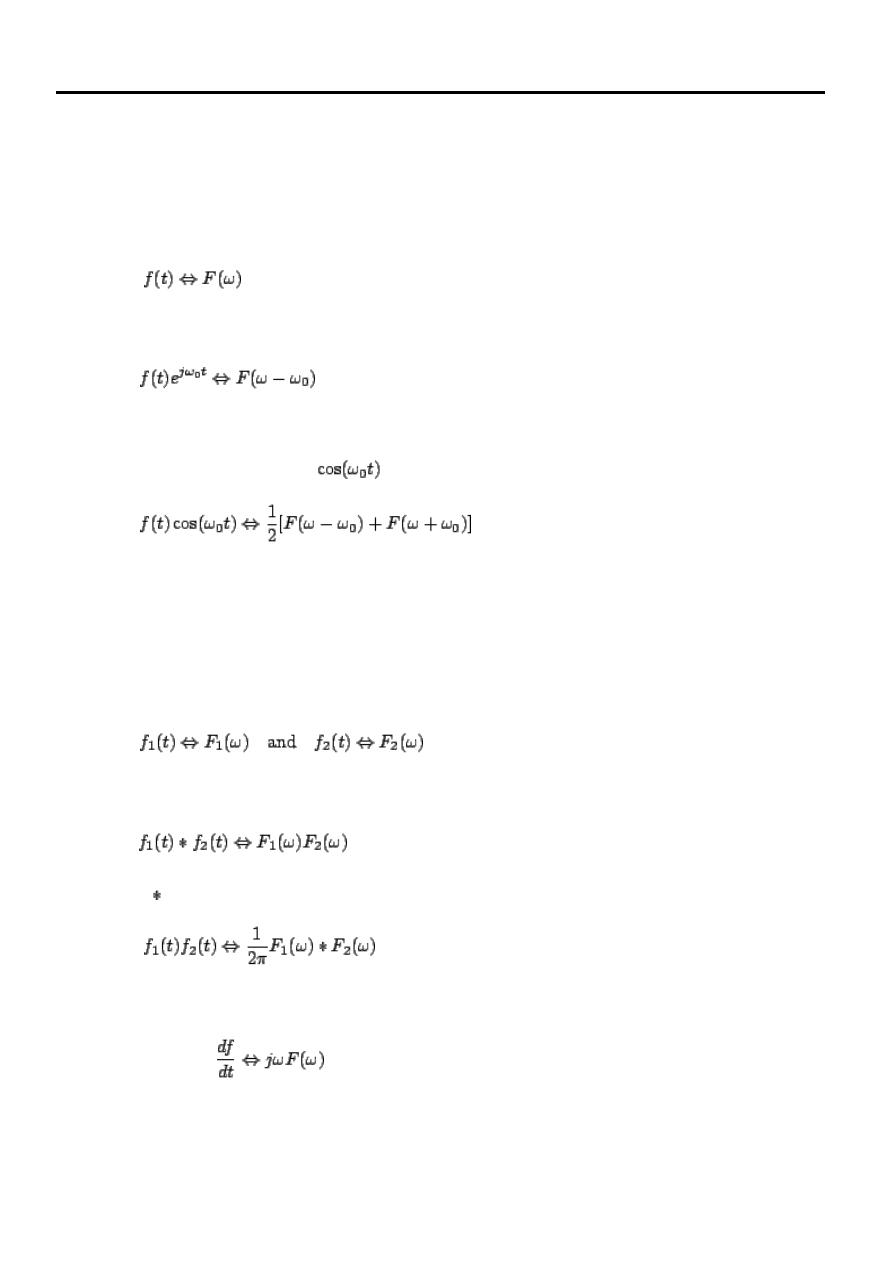
Signals & Systems Lecture Three
Lecturer: Dr.Manal Khadhim.
7
4. Frequency-shift Property
This property forms a basis for every radio and TV transmitter in the world. It
simply states that if
Then
But we can
multiply by . Using linearity we get
What we get out is two images in the frequency domain, at positive and
negative frequencies. This is called (amplitude modulation).
5. Convolution Property
If
Then
(where is convolution) and
6. Time Differentiation
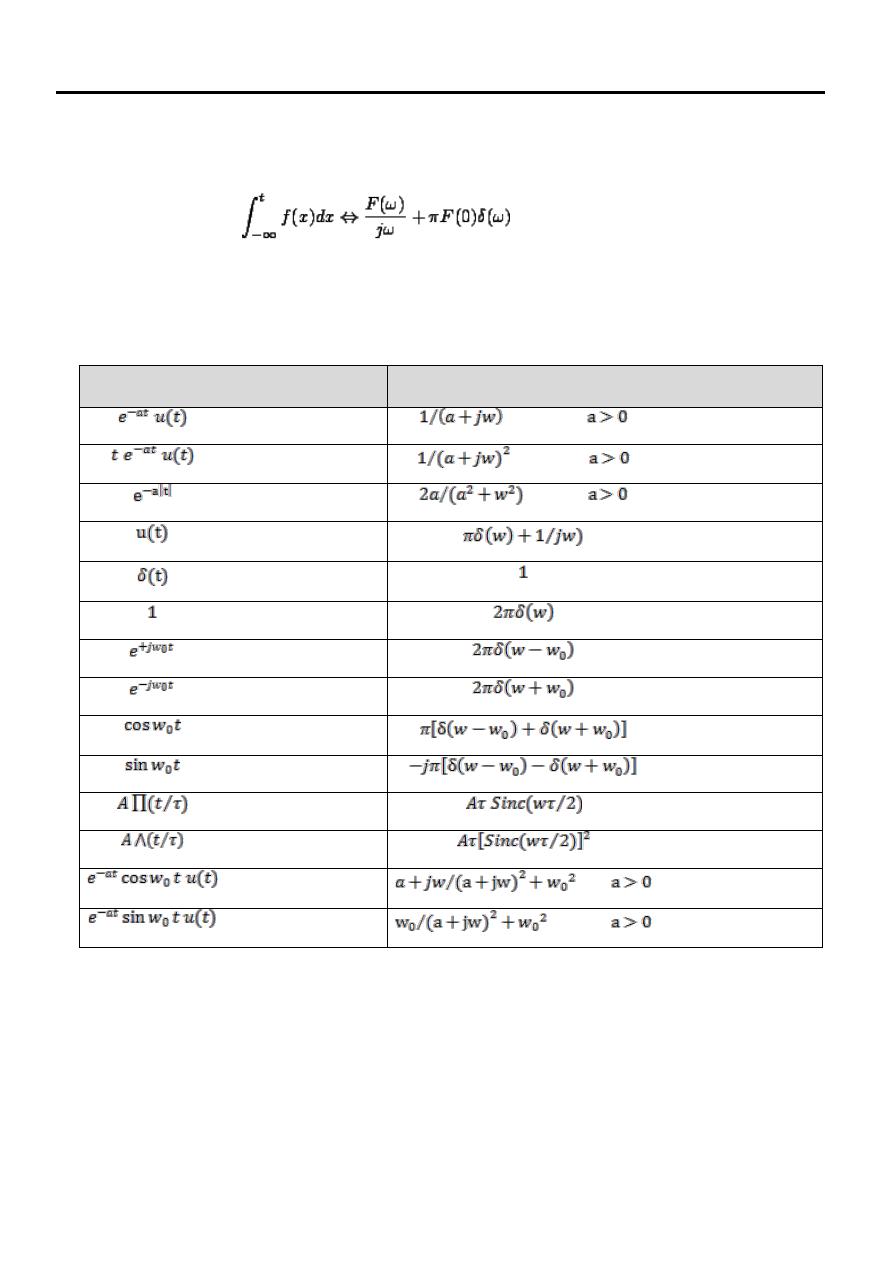
Signals & Systems Lecture Three
Lecturer: Dr.Manal Khadhim.
8
7. Time Integration
Table (1): some basic Fourier Transform Pairs
F(w)
f(t)
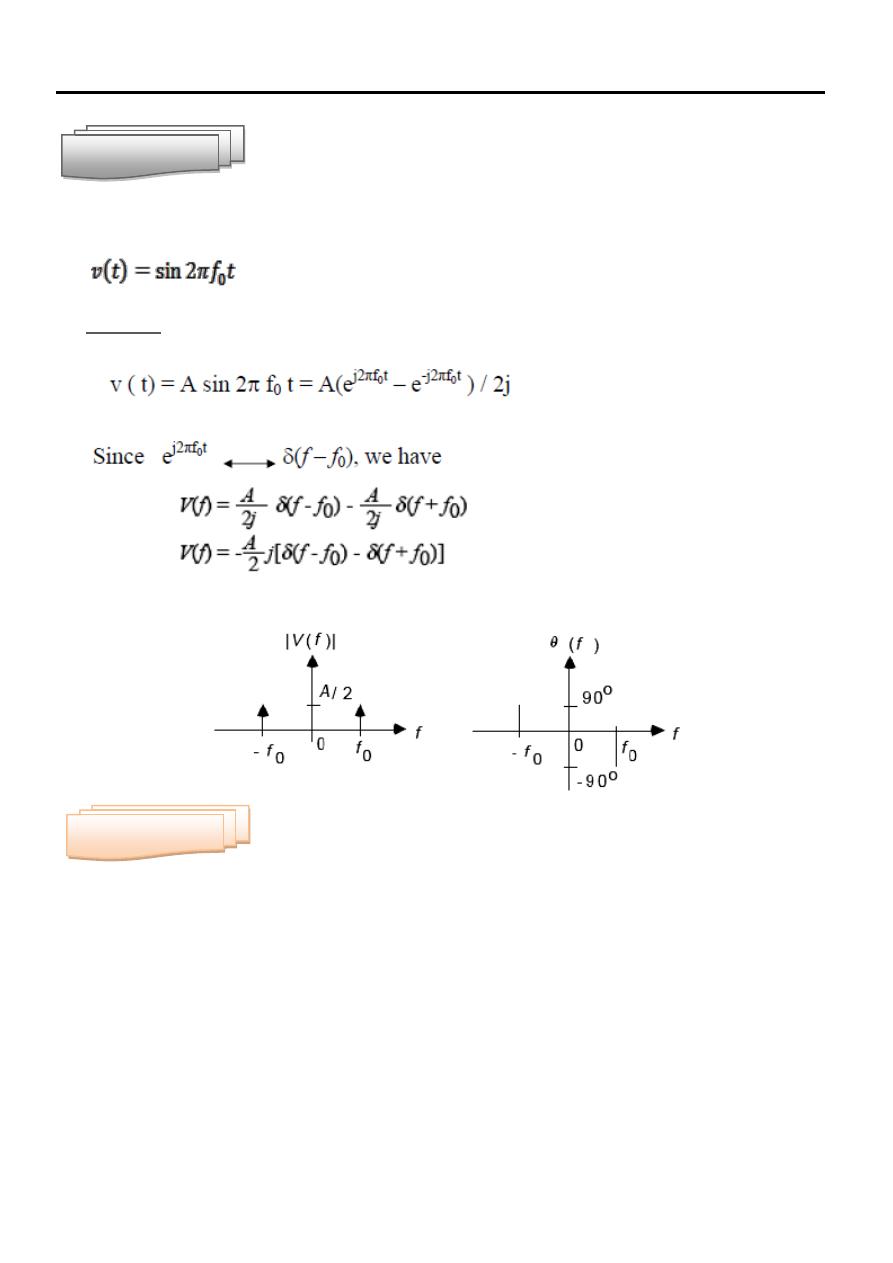
Signals & Systems Lecture Three
Lecturer: Dr.Manal Khadhim.
9
Find the spectrum of sinusoid
:
Solution
Prove that the Spectrum of a Rectangular Pulse is Sinc Function
Example Four
Example Five
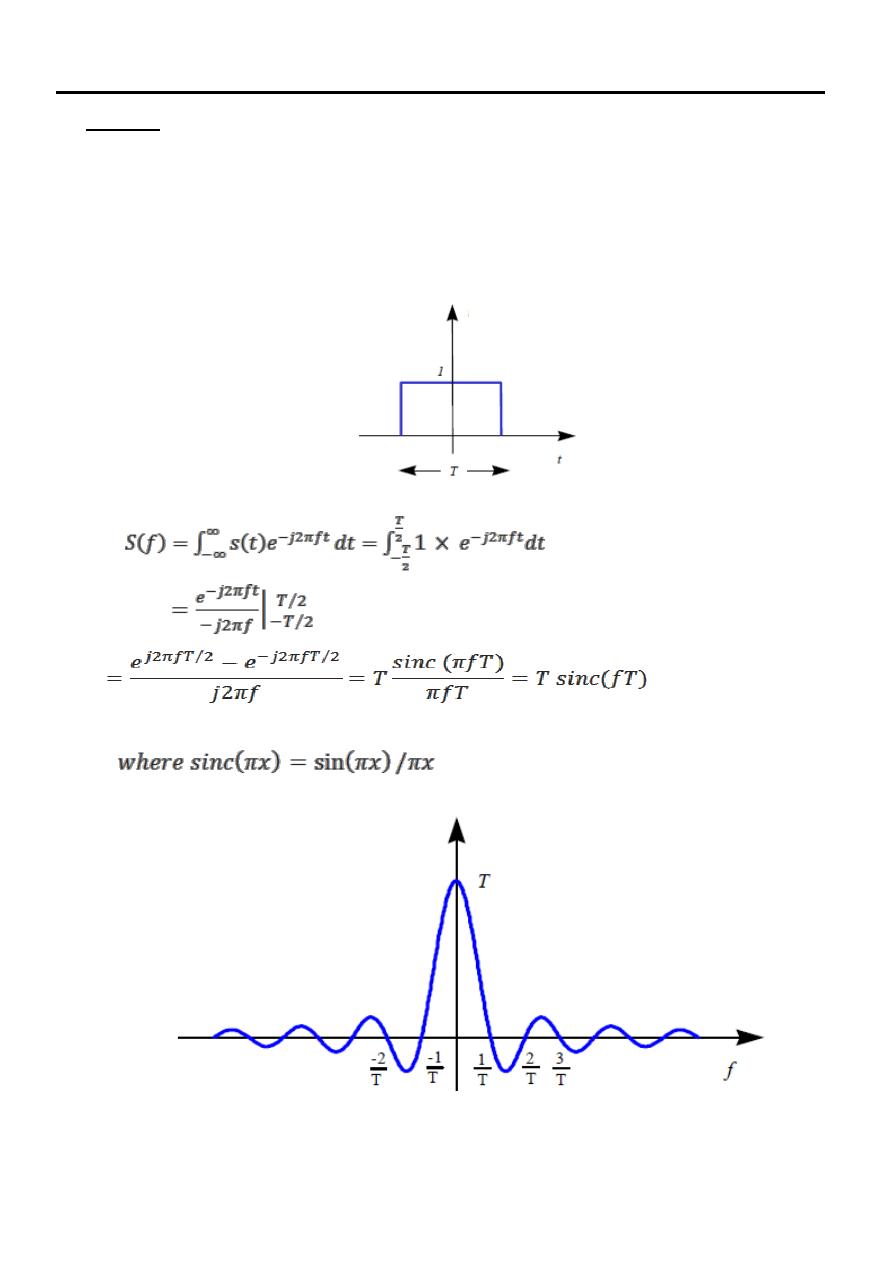
Signals & Systems Lecture Three
Lecturer: Dr.Manal Khadhim.
01
Solution
The Fourier transform of a rectangular pulse as shown in Fig. of duration T second
can be obtained as
S(t)
S(f)
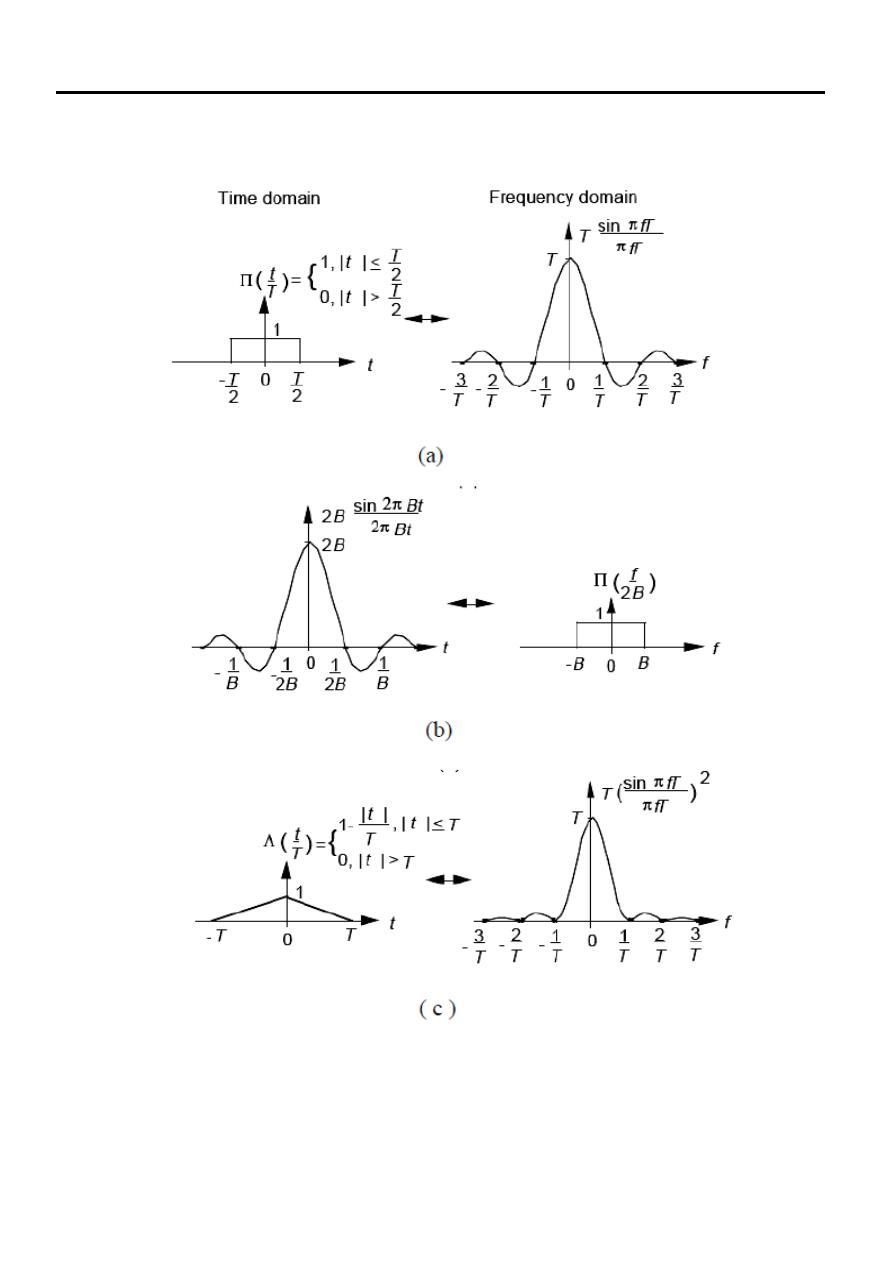
Signals & Systems Lecture Three
Lecturer: Dr.Manal Khadhim.
00
Figures bellow illustrate some basic signals and it´s Fourier Transform:
Figure: (a)Rectangular , (b)sin x/x and (c)Triangular signals
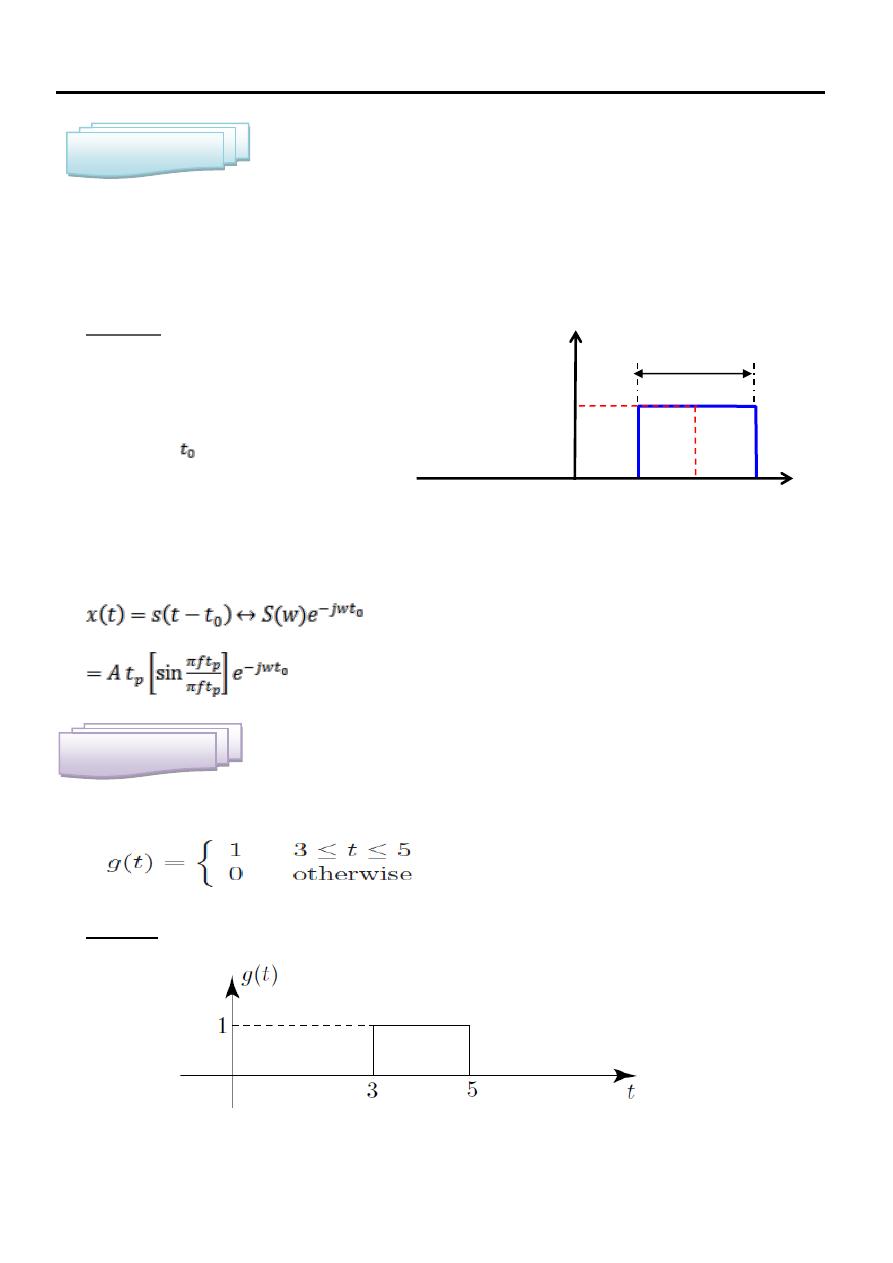
Signals & Systems Lecture Three
Lecturer: Dr.Manal Khadhim.
02
Find the Fourier transform for the signal shown in Fig.
Solution
This signal is the signal of example (3)
.
shifted by
Using delay property
Use the time-shifting property to find the Fourier Transform of the function
solution
Example Six
t
t0
X(t)
tp
t
t0
tp
x
(
t
)
A
0
t
t
p
t
0
X(t)
t
t0
Example Seven
A
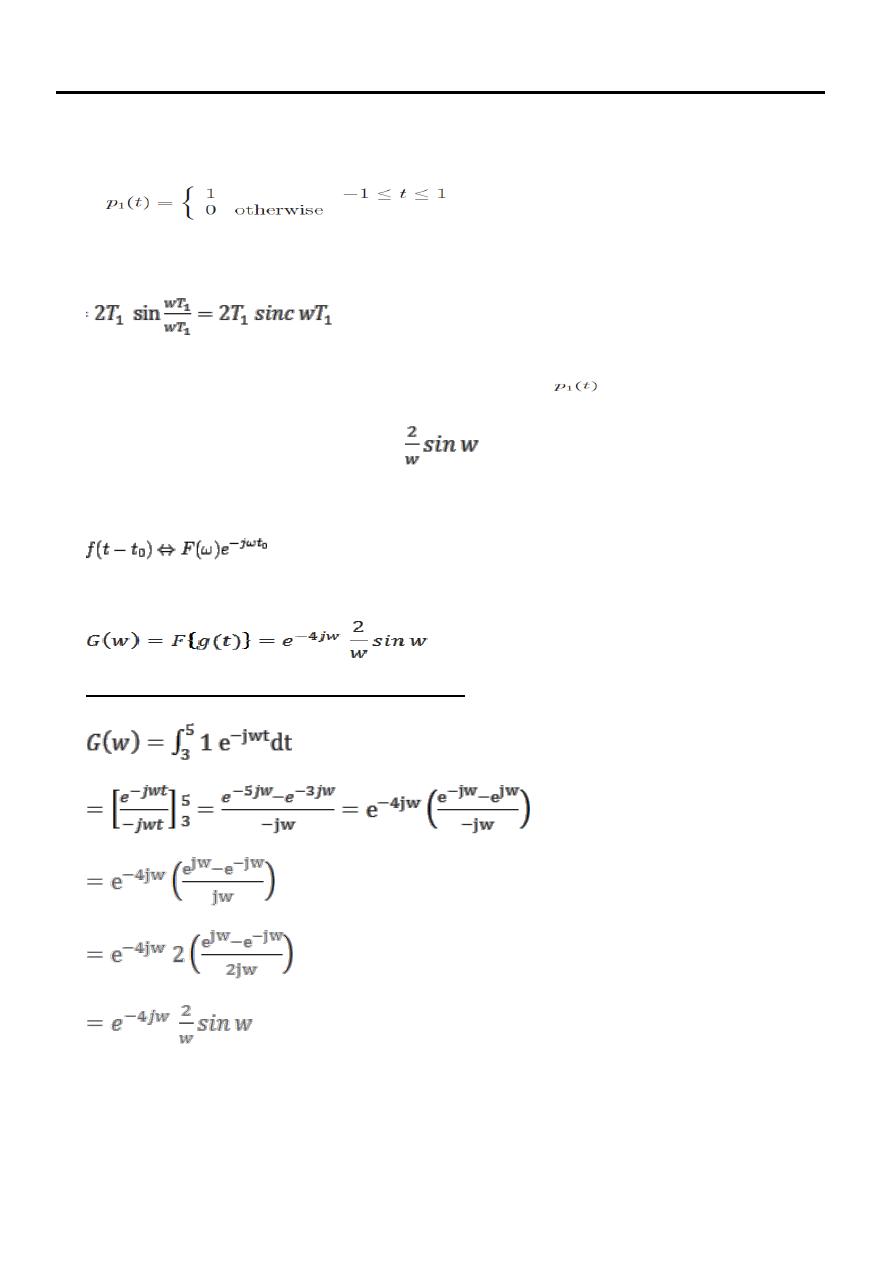
Signals & Systems Lecture Three
Lecturer: Dr.Manal Khadhim.
03
g(t) is a pulse of width 2 and can be obtained by shifting the symmetrical rectangular
pulse by 4 units to the right.
This signal become similar the signal in Example one where Fourier transform equal
By substituting 1 instead of T1 to satisfy the Eq. of
become
Fourier transform
he
Then t
After this using time-shift property
Hence by putting t0=4 in the time shift theorem
shift property
-
time
without using
Solution
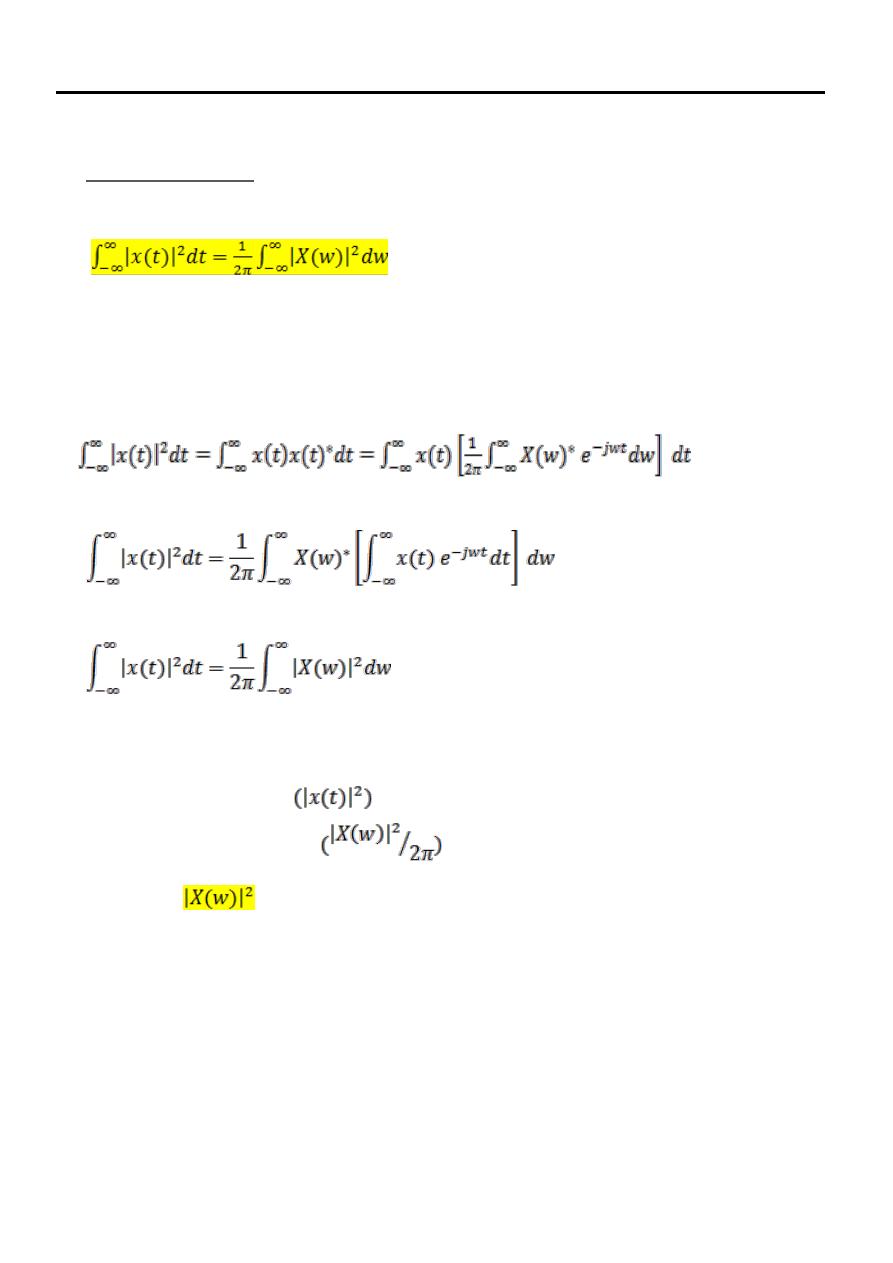
Signals & Systems Lecture Three
Lecturer: Dr.Manal Khadhim.
04
Parseval's Relation
If x(t) and X(w) are a Fourier transform pair, then
……………………….……………… (3)
This expression, referred to as Parseval's Relation , follows from direct application of
Fourier transform . specifically ,
Reversing the order of integration gives
But the bracketed term is simply the Fourier transform of x(t); thus,
The quantity on the left side of eq.(3) is the total energy in the signal x(t). Parseval's
Relation, eq.(3), says that this total energy may be determined either by computing
nd integrating over all time, or by computing the
a
the energy by unit time
. For
integrating over all frequencies
and
energy by unit frequency
density spectrum of the signal.
-
is often referred to as the energy
this reason
